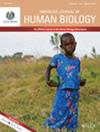Is Alcohol Consumption Pattern Dependent on Prenatal Sex-Steroids? A Digit Ratio (2D:4D) Study Among University Students
Abstract
Introduction
There is evidence that alcohol consumption is influenced by prenatal sex steroids (as measured by digit ratio [2D:4D]). Here, we clarify the effect size of the relationship in a student (rather than a patient) population.
Methods
There were 258 (169 women) participants. Digit length was measured directly with calipers. Alcohol use was evaluated by the Polish version of Alcohol Use Disorders Identification Test (AUDIT) and operationalized as total AUDIT scores and grams of alcohol/week.
Results
Digit ratios were sexually dimorphic (males < females). There were negative correlations between right 2D:4D and Dr-l (right 2D:4D minus left 2D:4D) and AUDIT scores and grams of alcohol/week in both sexes. Relationships varied from small (r = −0.29) to large (r = −0.69) and they were stronger in males in comparison to females and for right 2D:4D in comparison to Dr-l. In males only, there were small (r = 0.21) to moderate (r = 0.31) positive associations with body size (height, weight, and mean right digit length) and alcohol consumption. Multiple regression analyses showed relationships between digit ratios remained significant but those for body size did not.
Conclusion
Alcohol consumption was negatively related to 2D:4D, suggesting high prenatal testosterone and low prenatal estrogen are linked to its consumption. Correlations varied in strength from small to large with the strongest found for right 2D:4D and for males. Positive relationships between body size and alcohol were small to moderate, confined to males, and were not independent of digit ratios. Prenatal androgenization may influence alcohol drinking patterns in non-clinical individuals.

 求助内容:
求助内容: 应助结果提醒方式:
应助结果提醒方式:


